Tracking – Ancient Art for the Modern-day Hunter
One of the many things to love about hunting is how it encourages you to push your own personal boundaries. Not just by getting you out into the wild places where memories come from, but also by encouraging personal growth. Growth in skills that were prerequisites for survival to our ancestors but have become exceedingly rare today. Wildlife tracking is one of these skills and it can be of great use to the modern-day hunter.
“Tracking” as naturalists and hunters use the term, refers to the interpretation of animal sign. Most mammals that have a hunting or trapping season are (primarily) nocturnal. Viewing opportunities are limited with the notable exception of those delicious little arboreal rodents, the squirrels. To learn more about your quarry or the natural world in general, one needs to be able to read “sign”. Tracks, scat, dens and other marks left by wildlife are all considered “sign”. Recorded in three-dimensional shorthand, the sign reads like a book, to tell the story of critters unseen.
Conditions are variable both seasonally and across the state. In the north, there may be a fresh blanket of powder snow that leaves little to the imagination. Down south, the bare frozen ground may seem undisturbed after a stampede. Fresh snow, soft mud and powdered silt make some of the best substrates for tracking. A new snow or drenching rain will wipe the slate clean in all but the most protected areas.
If you are fortunate enough to have good tracking snow, you can use it to guide your small game hunt. If the snow is less than a couple days old, any squirrel or rabbit tracks indicate game in the area. With small home ranges, squirrels and rabbits can leave a lot of tracks over a week or more. This gives the hunter a quick index to small game activity in an area. By focusing on the areas with the most tracks, one can increase their hunting efficiency.
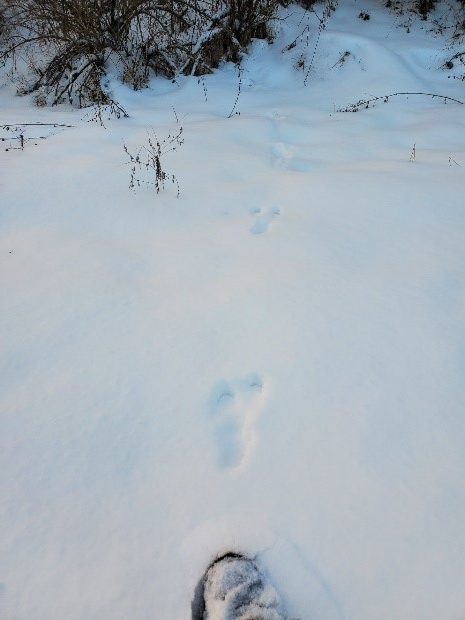
The typical bounding gait of rabbits results in a pattern shown here with the rear two marks falling nearly in a straight line, giving the track a “T” shape. Details like toe and claw marks are usually only visible when less than a day old.
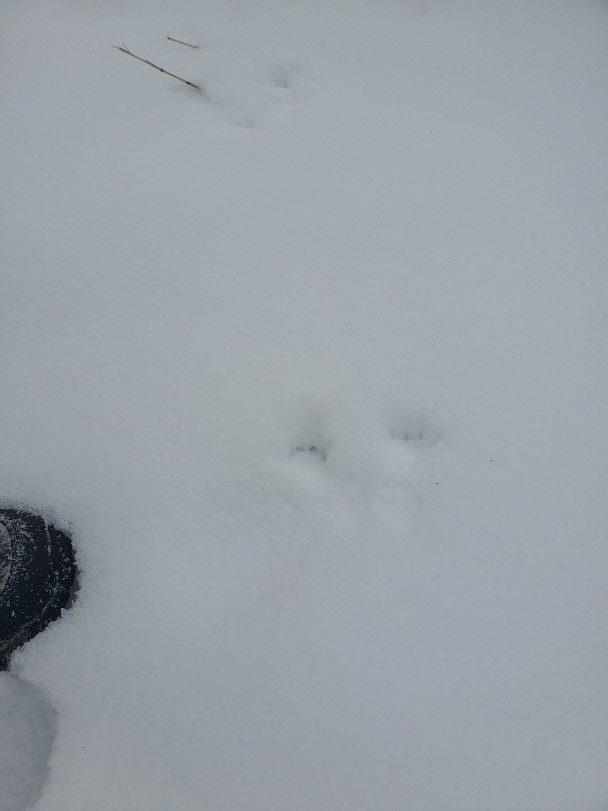
Squirrel tracks will typically form more of an offset trapezoid pattern like that above. The longer toes of squirrels will typically show even in older tracks.
When you come upon a track you are not sure about, draw it in your tracking journal or take a picture. Always include a measurement, or an object of known size for reference. Be sure to study individual tracks as well as the pattern. If you follow them long enough, you can collect more and more clues to narrow down your identification.
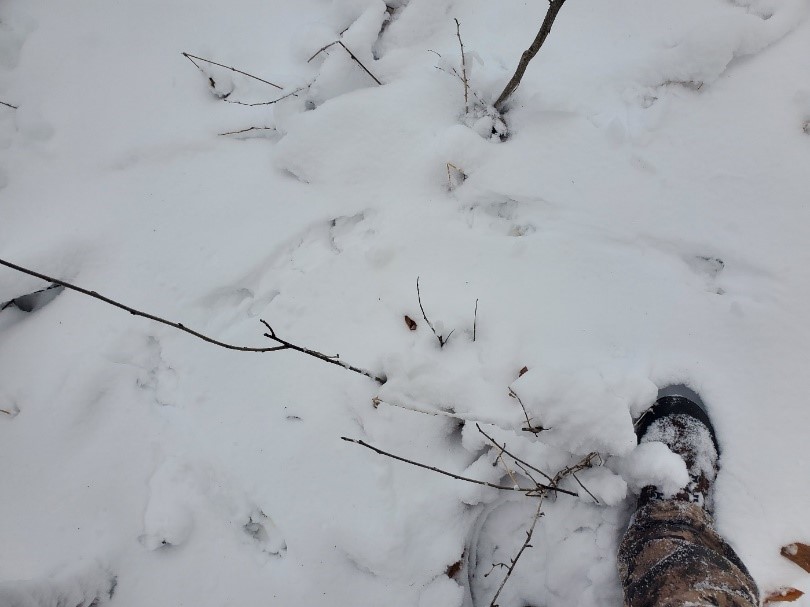
Hmm, these are not from a rabbit or squirrel. These tracks are in pairs in the snow with some drag marks, indicating this critter isn’t as tall as the snow is deep. There is about a foot between each of the pairs. This is the typical jumping gait of a short-tailed weasel in snow that is deeper than it is. As I followed the tracks further, they went in and out of every brush pile, sometimes tunneling under the snow for brief periods. This weasel and I were both looking for rabbits on this edge.
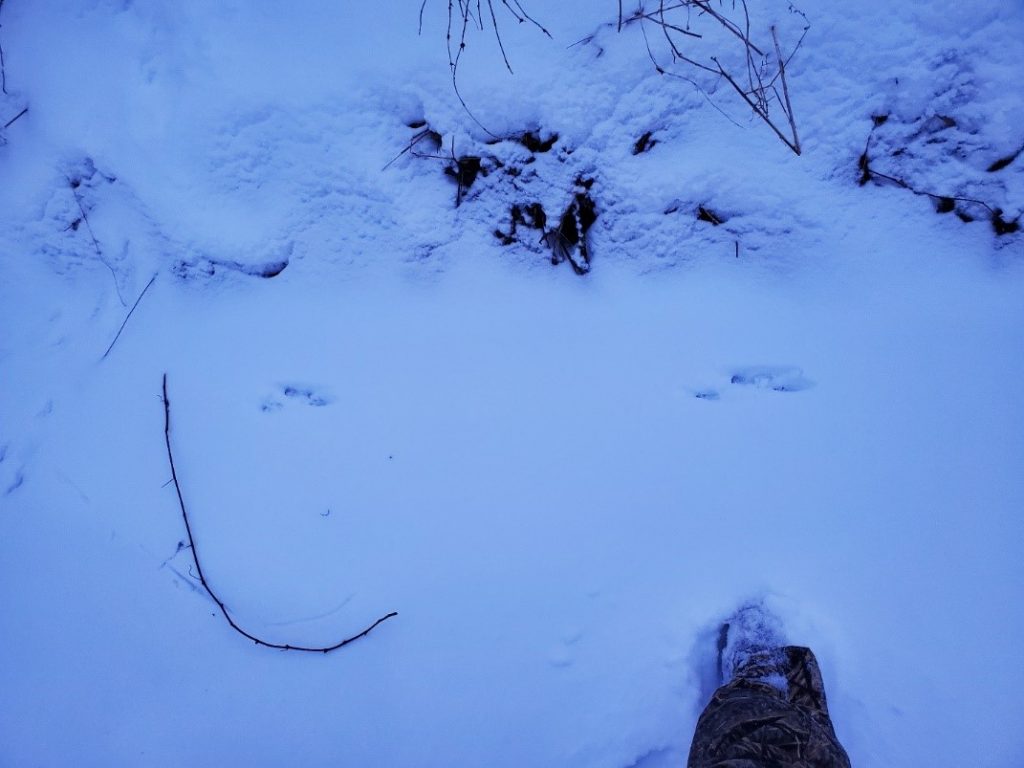
These tracks run along a semi-frozen creek. They go into and out of the water with about 2 feet between sets of tracks. This is the typical loping pattern of an American mink. There is hardly a hole, crevice, or shady spot along this small stream that this mink didn’t investigate.

Hmm, these tracks show only 4 toes letting us know its likely a canid or felid. The claw marks show up consistently, letting us know these are probably canid. The size coupled with the egg shape and direct travel let us know this is a coyote.
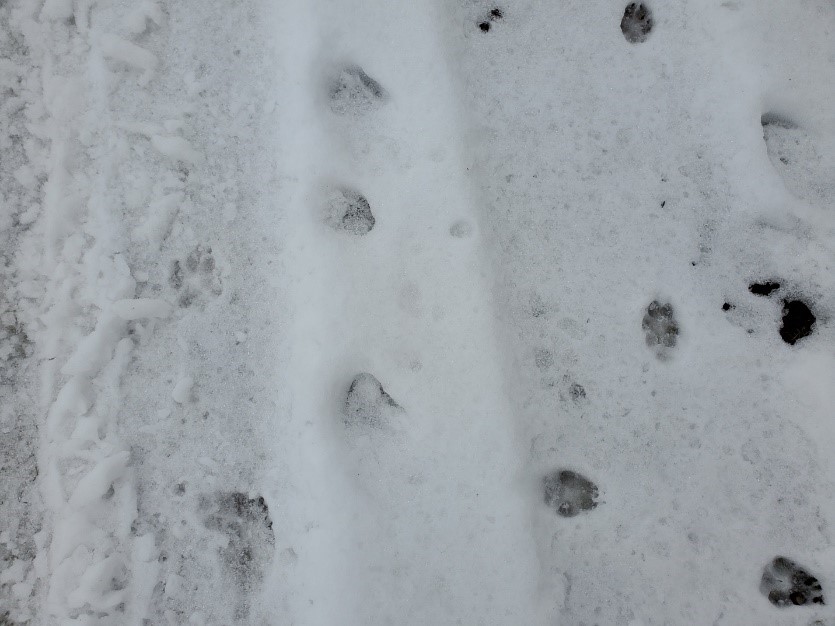
Here we have coyote tracks on the right side of the photo and domestic dog tracks on the left. Note how the egg shape of the coyote track stands out against the widened more oval track of the dog. Dog tracks can show up anywhere and vary greatly.
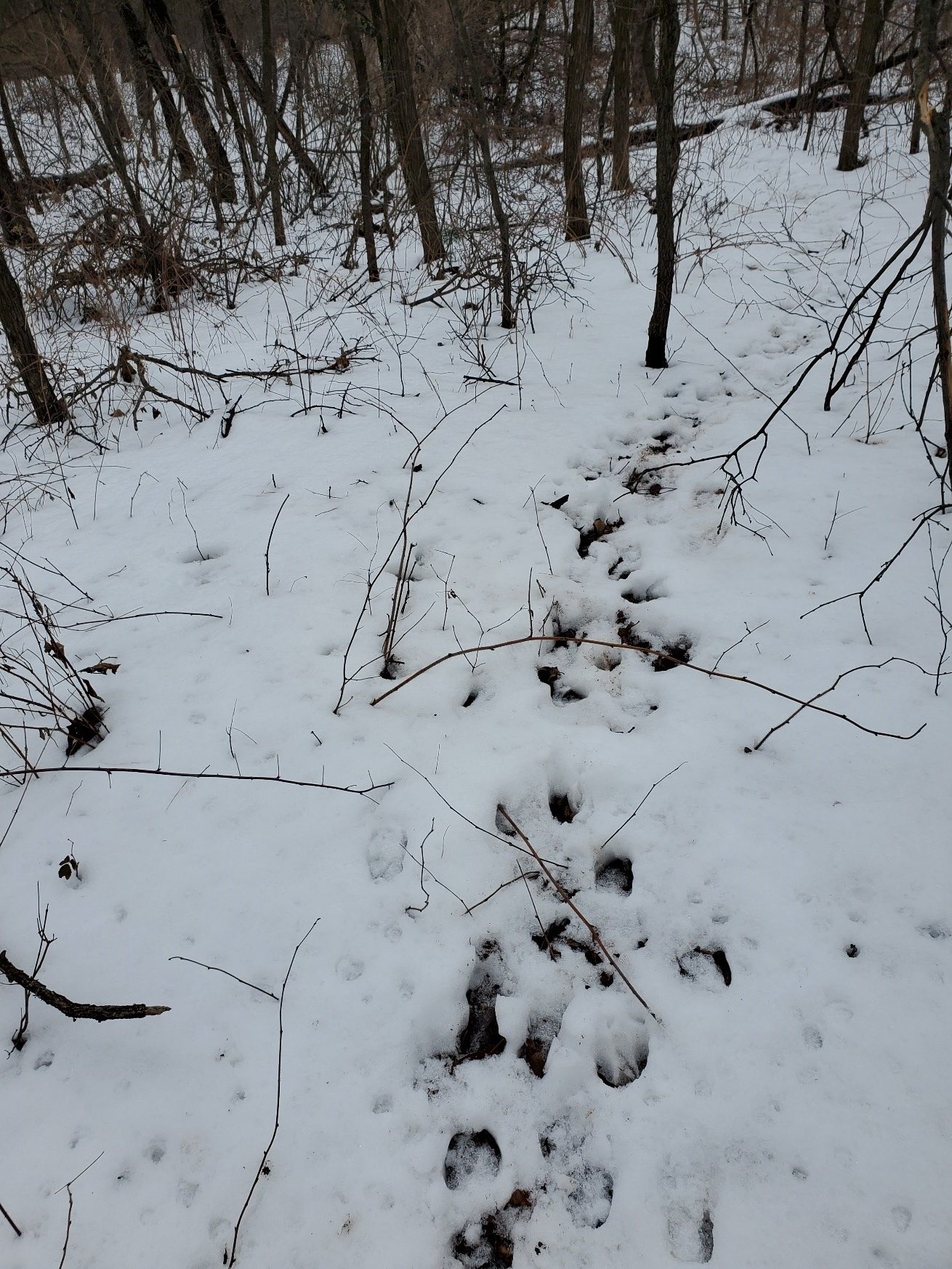
Even though deer season is in the rearview mirror, winter makes for quick scouting. Its pretty easy to tell where the heavy trails are. In a quick walk through the area, you can note some of the most used trails and bedding areas on a piece of property in a fraction of the time it would take to scout in August or September.
Whether it’s to help you on current or future hunts, to increase your understanding of the natural world or just an excuse to get outside, tracking can be a lot of fun. With a little soft snow and some time to wander, the mysterious world that comes to life at nighttime can start to take shape. When your vision extends beyond what you can see, you’re on the way to becoming the best hunter you can be. See you in the woods!
If you find yourself stumped on trying to identify a track, Living with Wildlife has developed Illustrated Tracks to help you along the way: https://www.wildlifeillinois.org/gallery/animal-sign/illustrated-tracks/